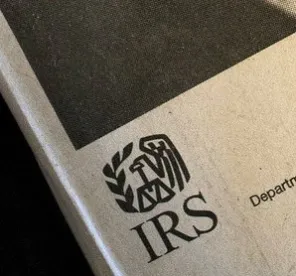The American Rescue Plan Act of 2021 (ARPA) implemented a 100 percent COBRA subsidy for certain qualified beneficiaries beginning on April 1, 2021, and ending September 30, 2021. On May 18, 2021, more than a month into the subsidy period, the Internal Revenue Service (IRS) released Notice 2021-31. This guidance, provided in the form of questions and answers (Q&As)—86 Q&As!—addresses issues of interest to employers, including issues related to reporting the Medicare tax credit and receiving advance payment of payroll tax credits that exceed Medicare taxes owed and withheld. Here are the key takeaways for employers.
COBRA Subsidy Eligibility
The IRS has clarified that an individual may become an “assistance-eligible individual” (AEI) more than once, if he or she experiences more than one qualifying event (or if both the individual and his or her spouse experience qualifying events) during the applicable time period (Q&A 3). This question could come up in the context of an individual who has been involuntarily terminated twice in recent months by different employers.
In addition, the IRS has confirmed in the notice that an employer may require an individual to self-certify that (i) his or her COBRA-qualifying event was a reduction in hours or an involuntary termination of employment and (ii) he or she is not eligible for coverage under another group health plan or Medicare (Q&A 4 and Q&A 5). An employer may rely on such attestations to obtain the Medicare tax credit and must retain those attestations or the other documentation it uses to substantiate subsidy eligibility (Q&A 6 and Q&A 7). Note, though, that an employer may not rely on a self-certification if it has actual knowledge that the certification is incorrect.
Under the ARPA, eligibility for other group health coverage or Medicare makes an individual ineligible for the COBRA subsidy. In the notice, the IRS explains that an individual is “eligible” for other coverage only if he or she can actually enroll in such coverage (such as under a spouse’s plan) (Q&A 9), so an individual is not considered eligible for other coverage during a waiting period or after an open enrollment period closes. If an enrollment period opened on or after April 1, 2021, an individual would lose eligibility for subsidized COBRA premiums on the first day the coverage would be effective under that other plan, regardless of whether the individual actually enrolled.
Before this guidance, there had been some uncertainty about the status of an individual who had lost coverage due to an involuntary termination of employment or a reduction in hours more than 18 months ago, but who had experienced a second qualifying event or a disability since then. The IRS guidance clarifies that certain of these qualified beneficiaries are subsidy-eligible: Those who elected COBRA coverage following their initial involuntary terminations of employment or reductions in hours and remained on COBRA coverage as of April 1, 2021 (Q&A 17).
There also was uncertainty about whether a retiree would be eligible for the APRA subsidy when he or she was eligible for retiree coverage from his or her former employer. The IRS has clarified that if the retiree coverage is offered under a different plan, the retiree is eligible for other group health plan coverage and ineligible for the COBRA subsidy. But if the retiree coverage is offered through the same plan that covered the retiree as an active employee, the retiree will be eligible for subsidized COBRA (Q&A 18). Note, too, that retiree coverage can be treated as COBRA coverage in this context (Q&A 36).
An individual who misses retroactive COBRA payments will not be ineligible for subsidized COBRA coverage, even if he or she makes a second-chance election retroactive to the loss of coverage date (rather than beginning on April 1, 2021) (Q&A 20).
Qualifying Events: Reductions in Hours and Involuntary Terminations
The notice confirms that individuals may be eligible for the subsidy even if the reductions in hours were voluntary (Q&A 21) and that they may include reductions and temporary cessations in hours due to furloughs (Q&A 22), lawful strikes and lockouts (Q&A 23), or leaves of absence that result in a loss of coverage (Q&A 25).
The IRS defines “involuntary termination” generally as “a severance from employment due to the independent exercise of the unilateral authority of the employer to terminate the employment, other than due to the employee’s implicit or explicit request, where the employee was willing and able to continue performing services.” In addition, an employee-initiated termination of employment is involuntary if it was due to “employer action that result[ed] in a material negative change in the employment relationship for the employee,” or if the employee knew that his or her employment would be terminated if he or she did not initiate the termination (Q&A 24).
While the determination regarding whether a termination of employment was involuntary will be “based on the facts and circumstances,” the IRS indicates that terminations are generally involuntary in certain cases:
-
An employer’s termination of employment due to absence from work for illness or disability, if, before the termination, there was a reasonable expectation that the employee would return to work after the illness or disability subsided (Q&A 25)
-
A termination for cause, unless the termination of employment was due to employee gross misconduct, in which case the employee is not eligible for COBRA or the ARPA subsidy (Q&A 27)
-
Participation in a “window” program that meets the requirements of Treas. Reg. § 31.3121(v)(2)-1(b)(4)(v) (Q&A 29)
-
An employer’s decision not to renew an employee’s contract, if the employee was willing and able to continue working (though such a termination is not involuntary if both parties understood at all times during the employment relationship that the contract was temporary and that there was no opportunity for a renewal) (Q&A 34)
The following types of terminations of employment are generally considered voluntary:
-
Retirement, unless the employee was willing and able to continue working and knew that he or she would be terminated if he or she did not retire (Q&A 26)
-
Resignation, unless it was the result of a material change in the geographic location of employment (Q&A 28)
-
An employee-initiated termination due to personal circumstances (such as caring for a family member) (Q&A 31) or general concerns about workplace safety (Q&A 30), unless the employee can demonstrate that an employer action or omission resulted in a material negative change in the employment relationship.
“Second-Chance” Elections
What if an AEI makes a second-chance election for COBRA, but his or her health plan option is no longer offered by the employer? The IRS states in the notice that the employer must offer COBRA coverage under the plan or an option that is the most similar to the former plan. The entire premium will be subsidized, “even if the premium for the plan [or option] is greater than the premium for the previous plan [or option]” (Q&A 42).
The IRS guidance also clarifies that an AEI who makes a second-chance election must be given the opportunity to elect subsidized COBRA coverage to begin later than April 1, 2021(Q&A 44). For example, if an individual was enrolled in a Marketplace plan and receiving an advance premium tax credit when he or she received a second-chance election form on May 1, 2021. To avoid violating the premium tax credit rules, he or she may not want overlapping coverage and can only end his or her coverage May 31, 2021, so he or she may elect subsidized COBRA beginning June 1, 2021. Note that Marketplace enrollment or eligibility does not preclude subsidy eligibility.
The IRS and the U.S. Department of Labor have extended COBRA election and certain other deadlines for up to one year during the COVID-19 pandemic. An individual’s second-chance election for subsidized COBRA coverage beginning April 1, 2021, or later, cuts off the individual’s right to elect COBRA coverage retroactive to the date of the qualifying event, even if the individual’s extended election deadline is still open. In other words, qualified beneficiaries are no longer able to elect retroactive COBRA coverage once 60 days have passed since receiving a second-chance COBRA election and must decide within the 60 days whether to begin COBRA coverage upon the qualifying event, April 1, 2021, or a later date (such as in the Marketplace coverage example above) (Q&A 59).
Medicare Tax Credit
The ARPA provides a payroll tax credit to the premium payee for the COBRA coverage provided to AEIs. The tax credit is a refundable credit applied against the employer’s portion of Medicare taxes. The notice provides guidance on calculating the credit and claiming the credit.
Calculating the Credit
-
The credit is equal to the amount that the premium payee (i.e., employer, multiemployer plan, or insurer, as applicable) actually would have charged the AEI for the COBRA premium (per quarter). This amount includes the amount charged for COBRA for the AEI, plus the administrative cost allowed (generally 102 percent of the applicable premium) (Q&A 63).
-
The credit does not include any amount of subsidy that the employer would have otherwise provided (Q&A 63).
-
The credit is available only for COBRA premium assistance provided during the covered period to an individual who is an AEI (Q&A 64).
-
The credit applies to increases to the maximum premium allowed under an employer’s plan for COBRA continuation (Q&A 65).
-
For COBRA coverage allocated between AEIs and non-AEIs, the credit can only apply to the portion of the premium allocated to AEIs (Q&A 68).
-
For COBRA coverage through an individual’s health reimbursement arrangement (HRA), the credit is limited to 102 percent of the amount actually reimbursed to the AEI (Q&A 70).
Claiming the Credit
-
The credit may be claimed by the premium payee (Q&A 71 and Q&A 72).
-
The credit is claimed on a IRS Form 941, “Employer’s Quarterly Federal Tax Return,” or IRS Form 7200, “Advance Payment of Employer Credits Due to COVID-19” (Q&A 75– Q&A 77).
-
The premium payee is not required to refund the IRS the credit if an AEI’s eligibility ends during the covered period (Q&A 78).
-
The credit is included in the gross income of the premium payee (Q&A 79).
-
The premium payee may not claim the credit on qualified wages on which a payroll tax credit for employee retention under the Coronavirus Aid, Relief, and Economic Security (CARES) Act was received, or on which payroll tax credits for paid leave under the Families First Coronavirus Response Act (FFCRA) were received (Q&A 80).
-
A third-party payer, such as a professional employer organization (PEO), certified professional employer organization (CPEO), or Internal Revenue Code § 3504 agent, may claim the credit (Q&A 81).






 />i
/>i


